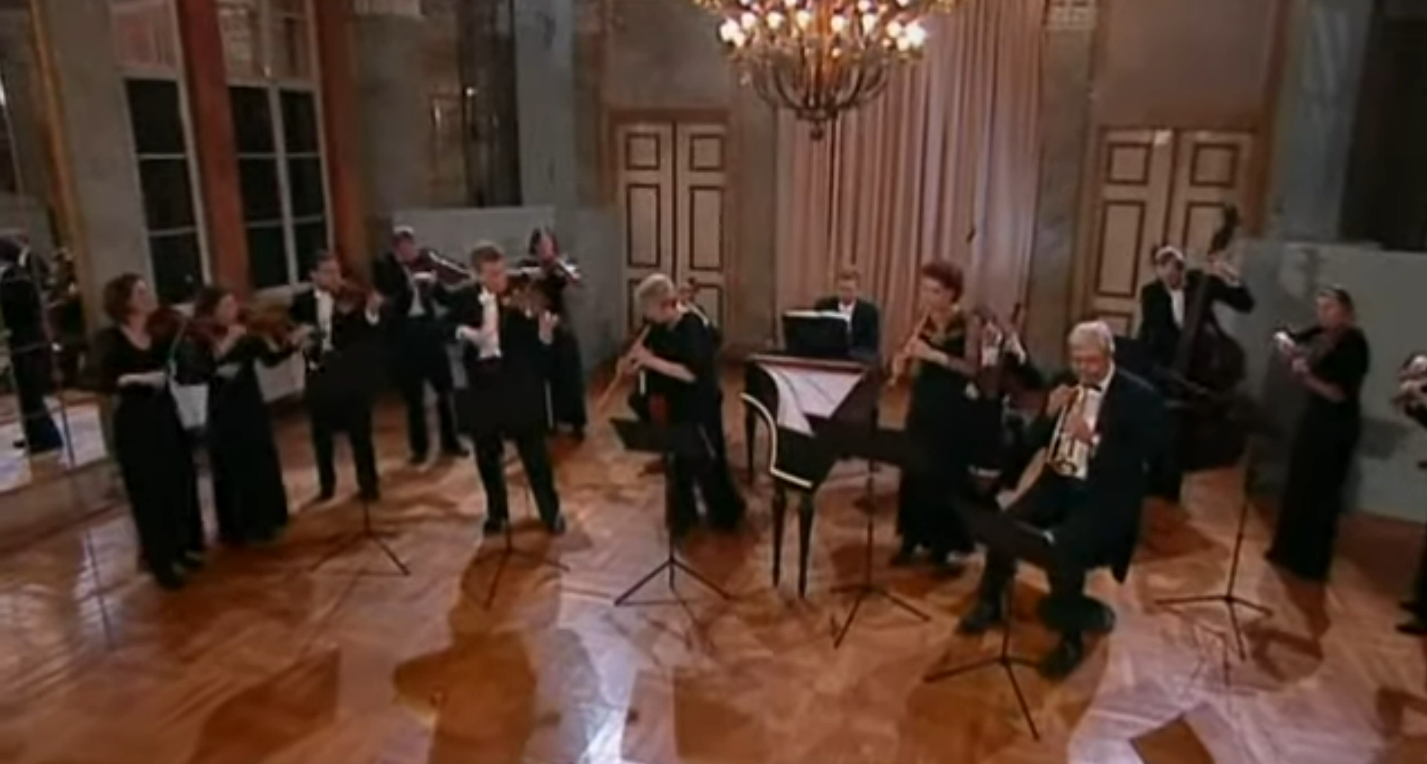8.3: The Concerto Grosso
- Page ID
- 165656
The Concerto Grosso.

A picture of the Freiburg Baroque Orchestra performing Bach's Brandenburg Concerto no. 2. Screenshot from YouTube.
The word grosso refers to "big." In the world of manufacturing, a gross refers to a dozen dozen units, or 144 units (12x12=144). In music, a concerto grosso therefore refers to a group of soloists accompanied by an orchestra, rather than a single soloist. These different soloists all interact with one another as individuals, while simultaneously interacting with the entire orchestra as a single unit. The concerto grosso was popular in the Baroque Period, and as mentioned earlier, fell out of popularity in the next few centuries. Early 20th century composers revived it to some degree, but it never attained that popularity it once held in the Baroque Period.
The piece we'll look at here is one of J.S. Bach's more famous concerto grosso, his second of six Brandenburg Concertos. In 1721, Bach compiled these six concertos and presented them to Christian Ludwig, who was at the time the Margrave of Brandenburg-Schwedt (a German royal of a territory of the Holy Roman Empire). This piece is most famous for its interesting blend of two different forms and its eclectic ensemble comprised of trumpet, oboe, recorder, and violin. Take a listen to the opening of this piece, and you'll hear each solo instrument entering into the mix one by one. You may also see that these instruments look a little different from our modern instruments. The trumpet has holes instead of valves, and the oboe looks different too. This is because the performers are playing on period instruments, which means they're playing on instruments that are as close to what Bach would have used as possible. This helps to create more of an "authentic" sound -- audiences can hear timbres that more accurately reflect what Bach would have written for in the 1600s and 1700s.
In this piece, Bach treats the form in a very innovative manner by blending the ritornello form with the fugue's form! He treats each soloist as a single "voice" from a fugue -- every time you hear the soloists performing, they're playing the fugue's exposition, or a middle entry. He then treats the orchestra's "return" in the ritornello as a fugue's episode. This highly unique blend of two unrelated forms is not uncommon for Bach, as he was a master of the fugue, and loved to insert fugues into his music whenever possible. The form's blend thus resembles the following formal structure:

Although this may be a bit difficult to unfold here, the video presentation for this unit explains this blending of form in much more detail.

